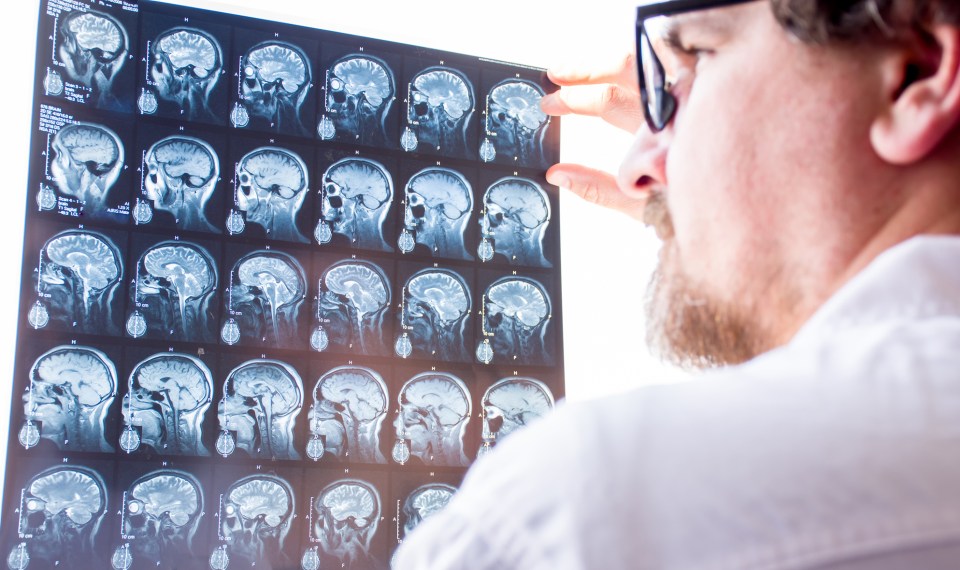Parkinson’s disease (PD) is a progressive disorder, meaning it worsens over time. While many associate the condition with tremors or shaking hands, there are a variety of lesser-known symptoms of Parkinson’s. This neurological condition predominately affects specific neurons in the brain known as substantia nigra. Damage to these dopamine-producing neurons causes problems with movement. Nerve activity in other areas of the brain may also be impacted, leading to a variety of symptoms.
Cause of Parkinson’s
Researchers have not uncovered the exact cause of Parkinson’s disease, but they do know the disease is due to the death of dopamine-producing brain cells.
Approximately 10-15% of PD cases are linked to genetic factors. Scientists have discovered mutated genes that can be passed down from generation to generation, but many experts believe PD is due to a combination of genetic and environmental factors.
Environmental factors that may contribute to developing Parkinson’s include head injury, certain occupations, exposure to various metals, and groundwater contaminated by industrial solvents. Pesticides and herbicides have also been associated with the disease.
Parkinson’s Disease Diagnosis
There is no conclusive lab or imaging test for Parkinson’s, so diagnosis is based on medical history and clinical examination. Current examination criteria, according to the International Parkinson and Movement Disorder Society (MDS), includes bradykinesia (unusually slow movement or reflexes) along with one or more of the following:
- Resting tremor characterized by shaking or trembling in a limb when at rest. Many times, the tremor disappears with movement. Tremor may also appear in other parts of the body, including the jaw or lower lip. Often, in the early stages, only one side of the body is affected, but symptoms may progress to both sides over time.
- Stiffness or rigidity in the trunk, arms or legs.
- Poor balance, sometimes accompanied by a history of falls.
Early and Lesser-Known Symptoms of Parkinson’s
One of the first symptoms that presents in those with Parkinson’s is a resting tremor on one side of the body, typically a hand or foot. A hand tremor where the person rubs the thumb and forefinger together in a rolling motion is commonly referred to as “pill-rolling.” While many people associate the disease with the characteristic tremor, there are many lesser-known symptoms of Parkinson’s. According to the Parkinson’s Foundation, early symptoms of Parkinson’s may include the following:
- Shrinking handwriting. Those with PD may experience a change in handwriting known as micrographia. Handwriting becomes progressively smaller, and words may be cramped or difficult to read.
- Loss of smell. Some Parkinson’s patients report a reduced sense of smell or an inability to smell certain foods.
- Difficulty sleeping. Problems falling asleep or staying asleep may occur during the early stages of Parkinson’s. Those with the condition also sometimes experience daytime drowsiness, restless leg syndrome, vivid dreams, waking for bathroom trips, talking or calling out during sleep and difficulty rolling over.
- Loss of automatic movements. Gait abnormalities and balance problems may be noted as the disease progresses. Those with PD may shuffle their feet, fall or experience freezing episodes. They may also be unable to control the speed or size of their movements.
- Gastrointestinal problems. Difficulty swallowing, nausea and constipation may be seen in those with Parkinson’s, likely due to muscle or nerve impairment caused by the disease.
- Vocal changes. Difficulties speaking or swallowing are other symptoms seen in PD. Changes in volume or clarity may be noted and those with Parkinson’s may struggle to find words.
- Facial masking. Reduced facial movement caused by muscle stiffness can occur. Those with PD may experience a lack of facial expression due to limited eyebrow movement and difficulty smiling.
- Neurogenic orthostatic hypotension. Nerve damage can prevent the release of norepinephrine, a chemical responsible for constricting blood vessels and increasing blood pressure. This leads to dizziness and lightheadedness as well as headache and blurred vision.
- Stooped posture. Those with PD may develop a stooped, or hunched, posture.
Additional Parkinson’s Symptoms
- Rigidity. Since muscles lose the ability to contract and relax, normal movement is impacted. Patients with Parkinson’s may not be able to swing their arms when walking or make other movements that occur naturally in others.
- Parkinson’s disease associated psychosis. Symptoms range from extreme confusion to hallucinations and delusions. A reported 20 to 40% of those with Parkinson’s suffer from hallucinations and delusions, although some of these cases are due to infection and medications.
- Anxiety and depression. Brain changes may be responsible for anxiety and depression, as well as psychological factors linked to a PD diagnosis.
- Bladder problems. Some experience urinary incontinence and a frequent, urgent need to urinate.
- Fatigue. Common in the early stages, the cause of fatigue is unclear, but may be due to motor symptoms.
- Pain. Progression of the disease leads to pain, especially in the hands, feet and spine. The Parkinson’s Foundation divides pain into five categories:
- Musculoskeletal pain caused by PD’s impact on bones, muscles, ligaments, tendons and nerves
- Neuropathic/radicular pain due to nerve damage
- Dystonic pain from muscle spasms or cramps
- Akathisia described as restlessness or the inability to remain still
- Central pain caused by dysfunction of the sensation and pain pathways in the brain, brain stem and spinal cord
Treatment of Parkinson’s Disease
Medical therapies aimed at controlling symptoms of PD and relieving discomfort include:
- Dopamine. Brand name drug Sinemet, a combination of carbidopa/levodopa, is a commonly prescribed therapy for the treatment of Parkinson’s symptoms.
- Botulinum toxin (Botox). Botox is administered as an injection into muscles to relieve symptoms of dystonia (an involuntary twisting of a body part), drooling, urinary incontinence and tremor.
- Deep brain stimulation. This is a neurological surgery done to help control motor symptoms. The therapy is not for all with PD and should be considered only with a recommendation by a neurologist.
- Other surgical therapies. Joint replacement or surgery to repair discs, treat spinal stenosis or correct damage due to severe osteoarthritis may be recommended for some.
Rehabilitation Therapy for Parkinson’s
Inpatient rehabilitation offers PD patients an opportunity to work with a physiatrist and rehabilitation team of nurses, therapists, case managers, pharmacists, psychologists and dietitians. This comprehensive approach can assist the patient in safely carrying out activities of daily living and reduce the strain placed on caregivers.
Parkinson's Management
Learn more about how inpatient rehabilitation can help you manage your Parkinson's symptoms.
Learn MoreThe content of this site is for informational purposes only and should not be taken as professional medical advice. Always seek the advice of your physician or other qualified healthcare provider with any questions you may have regarding any medical conditions or treatments.



